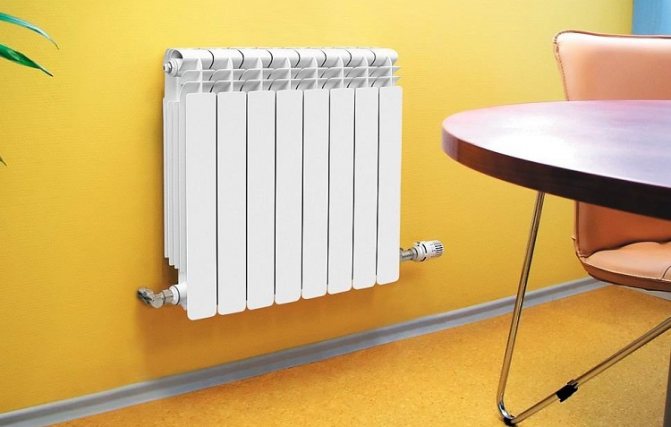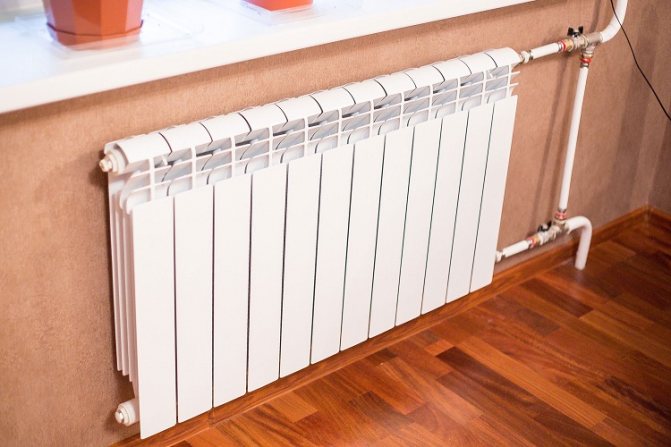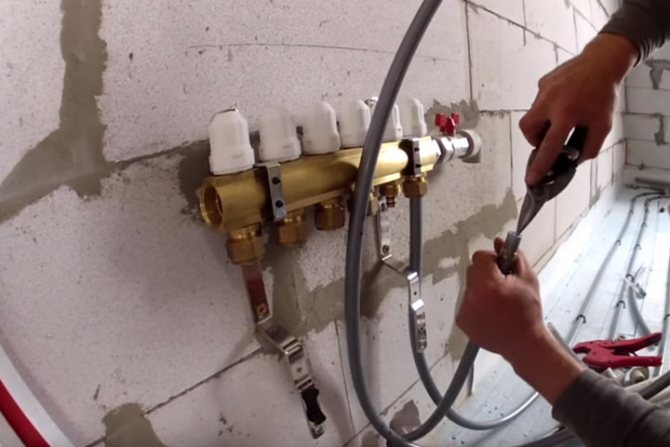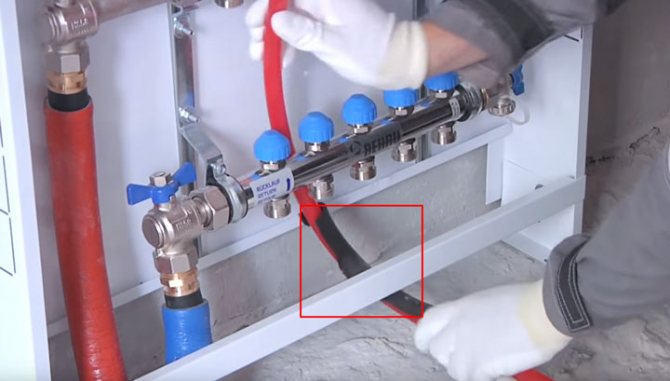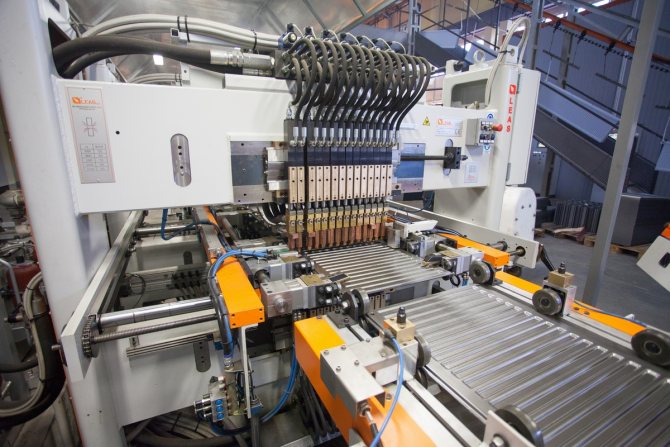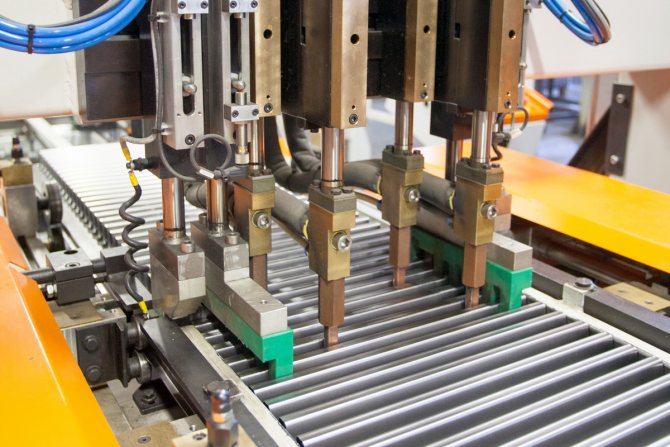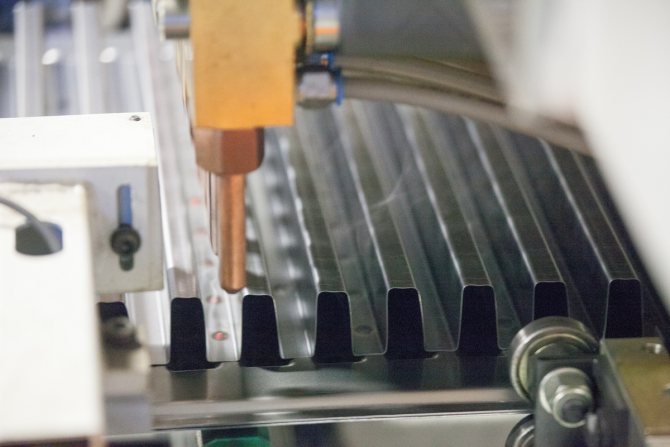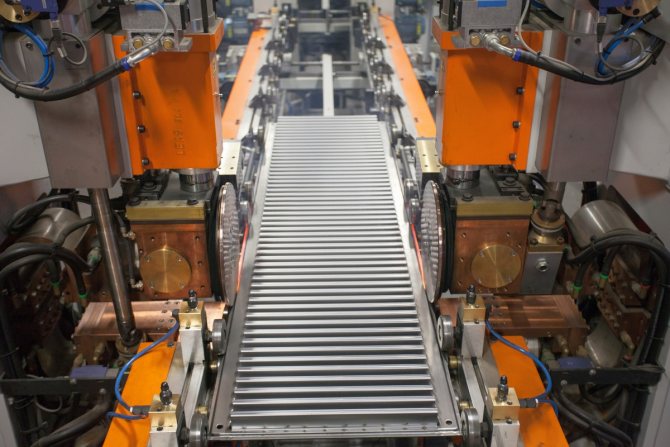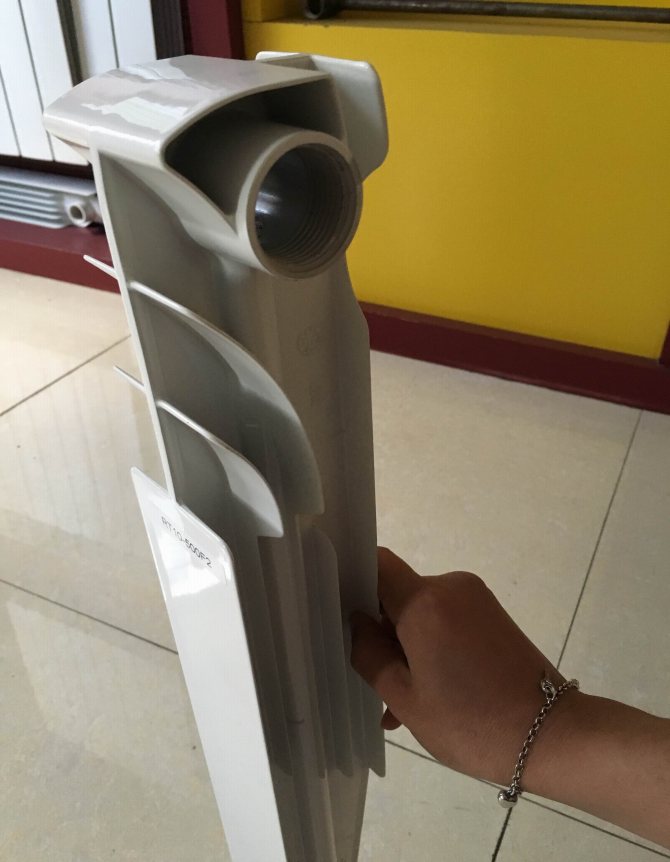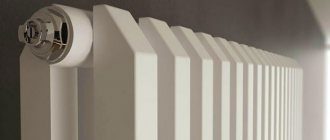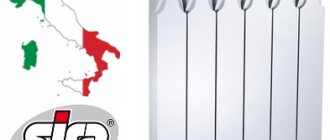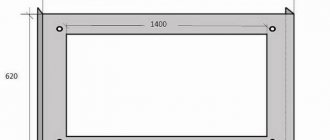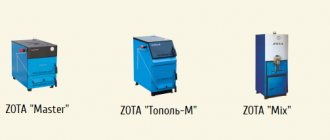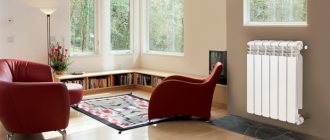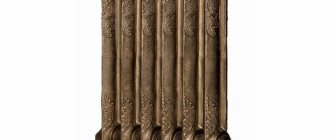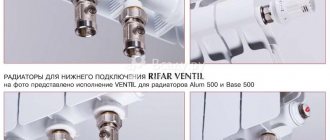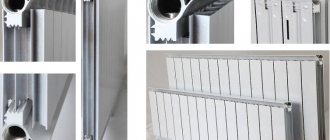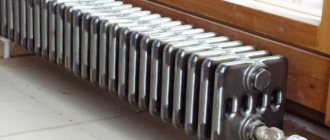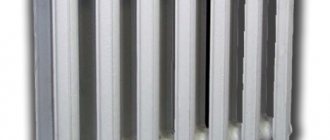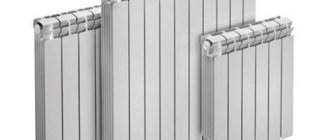Today, consumers have become more interested in Russian-made bimetallic radiators, since they are practically not inferior to foreign brands in many performance indicators. Domestic equipment is less demanding on the quality of the heat carrier for urban heating networks, but the design and build quality are highly commendable.
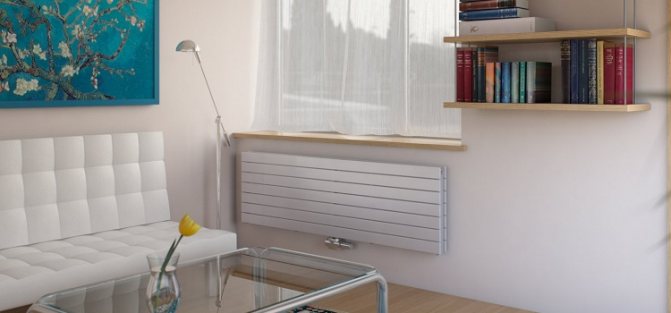
Bimetallic radiators - modern models of heating equipment
Radiator production: geography of the issue
Most of the brands that produce aluminum and bimetallic heating radiators for the mass consumer are currently placing their orders for production in China. Products of different brands may be manufactured in the same Chinese factory. Therefore, "country of the brand" usually means nothing more than the location of the company's headquarters. For example, Italy is the market leader for heating radiators from Western Europe, but they are often still produced in China, albeit using Italian technologies. The only exceptions are a few companies, for example, Global or Fondital, whose production is located exclusively in Italy. German steel radiators are also popular, but their range and design are somewhat more modest than those of Italian ones. The products of manufacturers from Eastern Europe - Poland, Hungary, Czech Republic, Slovakia - are assembled on the territory of these countries, but technologically lagging behind their counterparts from Western Europe. Domestic companies offer radiators made in Russia using foreign technologies, as well as models of their own design.
Be careful!
Chinese products attract buyers with low prices, which differ significantly from the proposals of European and Russian companies. Its quality also varies greatly: often Chinese radiators not only lag behind in actual technical characteristics, but are also unsafe for the health of the consumer. Toxic asbestos can be used in their production. This fact was established by the International Association of Manufacturers of Aluminum Radiators AIRAL when testing products from China.
European companies that produce premium designer cast iron and high quality steel radiators do not locate production in China, but their products are usually supplied to order for individual interior solutions.
Rating of radiator manufacturers
When figuring out which country a particular mass brand belongs to, be prepared to listen and read a lot of confusing stories in which Chinese production and Italian design will be involved in one way or another. It is quite difficult to get to the bottom of the truth, although there are pleasant exceptions. Among them, it is worth choosing the best radiator.
Global: # 1 brand in the world of radiators
The world's leading manufacturer of aluminum and bimetallic heating radiators GLOBAL DI FARDELLI OTTORINO and C was founded in 1971 and was one of the first in the world to mass-produce aluminum radiators. Now 40% of its products are destined for the Italian market, and 60% are supplied to 35 countries of the world. Global is the only European company specializing in such products that has not moved its production to China. The company has a Russian-language version of the site. Global aluminum and bimetallic radiators entered the Russian market in 1994.They have a reinforced structure and can be installed in both centralized and autonomous heating systems. They are characterized by high heat transfer, reliability, durability, environmental friendliness, a variety of colors and models. Depending on the depth, the heat transfer of one section of a radiator with an installation height of 500 mm is from 165 to 185 W for bimetallic radiators and from 181 to 197 W for aluminum. The maximum temperature of the coolant is 110 o C. The working pressure for aluminum models is 16 atm, for bimetallic - 35 atm.
The company's quality management system complies with the international standard ISO 9001, and Global products are certified in more than 40 countries around the world, including Russia. For the products of the factory - a ten-year guarantee is provided, provided by insurance in one of the leading European insurance companies. The cost of one aluminum section of the Global radiator is on average 600 rubles, bimetallic - 1000 rubles.
Oasis: a controversial brand
The most popular Chinese company in our market produces all types of radiators: cast iron, aluminum, steel, bimetallic. Sometimes its products are passed off as German, citing the involvement of German engineers. However, the plant in China is far from using modern technologies, the production is close to handicraft, which is confirmed by negative customer reviews regarding the size and heat transfer, which do not correspond to those recorded in the technical documentation. Chinese Oasis radiators are sold mainly in the construction markets with a 1 year warranty.
The brand also locates its production sites in Russia. These products can be distinguished by the tricolor on the packaging. These radiators have a 15-year warranty and insurance from Rosgosstrakh. Heat transfer of one section of an aluminum radiator - 192 W, bimetallic - 190 W, operating pressure 16 atm, maximum coolant temperature - 110 o C. radiators AIRAL.
The cost of one section is around 350 rubles. This is a budget decision, with all the ensuing consequences - you need to be extremely careful when buying.
Apriori and Elsotherm: two faces of one Russian holding
On the basis of the ELSO group holding, aluminum and bimetallic radiators are produced under two brands - Elsotherm and Apriori. The first was created in 1999. Products manufactured under the brand are guaranteed for 15 years. Radiators are manufactured in Russia. Heat transfer characteristics: for the bimetallic section - 123 W, for the aluminum - 198 W (at the time of this writing). It should be noted that the company does not stop there, constantly improving the technical characteristics of its products. So, back in May 2015, this figure was 181 W per section (confirmed by tests by the Airal Association).
What domestic brands offer bimetal
Modernization of old heating systems is caused by necessity, and when creating new communications, the cost of components is of great importance. The latest climate systems offer savings in different ways:
- maximum insulation of houses and apartments;
- connection of Russian-made heating radiators from a budgetary and economical niche;
- inclusion of environmental technologies;
- heating system equipment with climate control, "smart home" and "warm floor" circuits, controlled from a smartphone or a presence sensor.
In houses of the old layout, not all modern methods are applicable, but every owner has access to the replacement of old cast-iron "accordions", which have a minimum efficiency due to clogging, with new heating sections made of bimetal.
The following Russian brands have firmly established themselves in the domestic market of heating equipment in the last 2-3 years:
- PRADO (Prado);
- Teplopribor;
- Royal Thermo;
- RIFAR (Rifar);
- KZTO;
- Itermic (Aitermik);
- Halsen;
- Thermal;
- Logatrend Buderus and others.
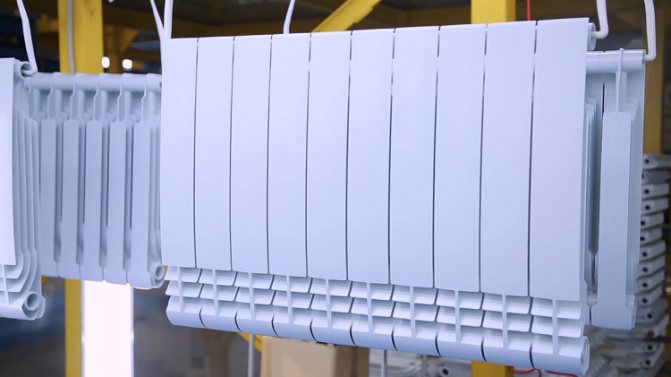

Bimetallic radiators are produced by many Russian enterprises
Russian batteries, such as the Royal Thermo revolution bimetall 350 (based on a steel tube), are in no way inferior in quality and reliability to Italian and German equipment. These products do not require expensive customs clearance and complex taxes, so their price is available to every buyer.
Only one domestic enterprise Royal Thermo produces up to 12 million sections per year, and there is a growth trend. Russian manufacturers also offer reliable pipes and fittings for them - not only made of steel, but also polymer ones. Experts believe that over time, our enterprises will meet all the needs of consumers from the Russian Federation and neighboring countries.
Advantages and disadvantages of domestic bimetal radiators
Bimetal has increased heat transfer. The only weak point of bimetallic models is the joints of steel and aluminum, where they join the pipes of the central heating.
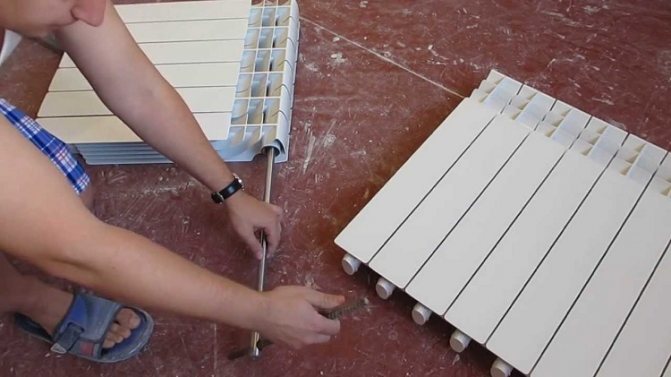

Sectional models are good because they can be extended to the required length.
Emergency situations happen extremely rarely, but with a high probability of strong water hammer, it is better to take solid models, not sectional ones. It is better to entrust the installation of new heat blocks to specialists.
With proper connection, Russian batteries made of 2 types of metal are practically devoid of disadvantages:
- are distinguished by high strength, reliability and durability;
- have maximum efficiency;
- practically eliminates the likelihood of leaks in the housing, even with an increase in the number of sections;
- are not inferior in design to the best imported brands, rounded ribs guarantee safety even in children's rooms);
- they are designed for high working pressure (up to 20 Atm);
- steel ducts are equipped with enhanced anti-corrosion protection;
- adapted for heat transfer fluids of any quality;
- products of different colors are presented in the catalogs, if you wish, you can contact the manufacturer and order a series of the required shade of heat-resistant enamel for your interior;
- many models are equipped with a thermostat and a flow control system to reduce the temperature of the batteries during warming (if it is not there, it is possible to install it at the junction with the pipes);
- radiators are presented in a large assortment in terms of overall format (length, width and depth) and the number of sections (different from the standard in 12 segments);
- high compatibility with pipes of any heating system, thanks to a wide range of couplings, fittings and adapters;
- the price tags for domestic models are much lower than those of imported bimetallic counterparts.
Like any product, bimetal radiators have certain drawbacks, which are important to know about before making a purchase.
- The batteries have small pipe diameters with a similar opening width, where dirt accumulates over time (cause clogging and reduced system efficiency). The problem is solved by cleaning the radiators. Prevention - filter installation.
- With a low-quality coolant, the service life is reduced.
- The differing coefficients of expansion of steel and aluminum when heated up quickly cause a characteristic crackle at the joints, but this can take some getting used to.
- The cost of steel and aluminum radiators is higher than cast iron, but this is not a reason to refuse to buy.

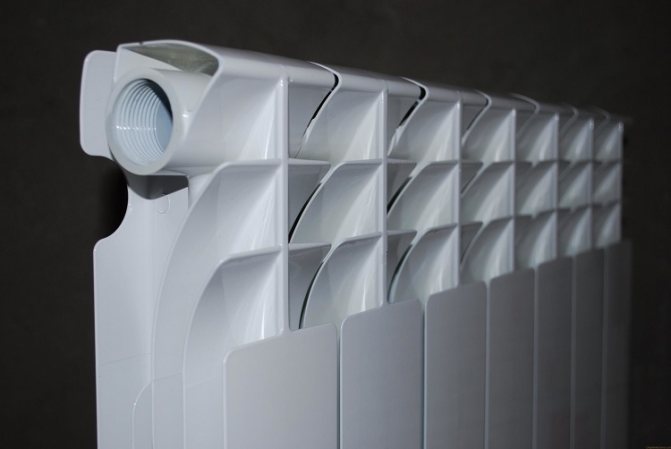
Dirt can accumulate over time in the joints of pipes and batteries.
What is the difference between heating made of steel and aluminum of Russian production
Bimetallic radiators from a Russian manufacturer demonstrate high reliability in extreme conditions - with water hammer in the system (pressure surges) and water pollution. The inner coating of the steel base protects the heating equipment well from rust.
Important! Although the manufacturer's documents indicate "stainless steel", over time, the internal protection loses its resistance to corrosive processes. They are inevitable, especially after draining the water from the pipes in the summer.
In Russian realities, the most attractive bimetallic radiators from foreign brands are often disappointing because of their inability to cope with extreme conditions. In addition, our products have a sufficient thickness of pipes and bodies, so heating systems are well tolerated during periods of severe frost.
Russian manufacturing plants have long ago moved away from the old production system and switched to new technologies that guarantee up to 20-30 years of flawless operation. They are encouraged not only by their functionality, but also by their excellent design - they perfectly fit into various interiors (houses, offices, shops).
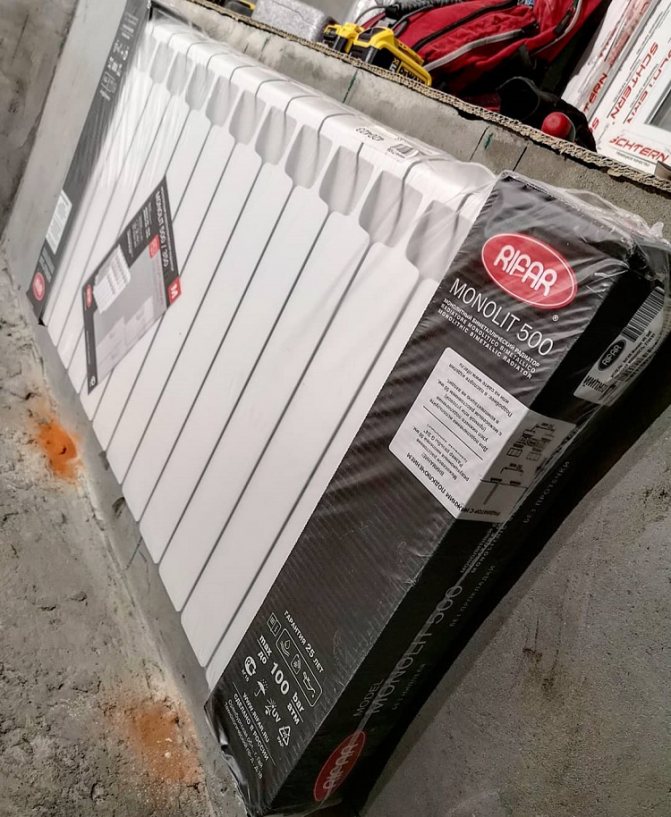

Radiators of Russian manufacturers can be operated for several decades.
Russian batteries are produced from a steel frame in an aluminum casing, on which thermo enamel is applied. It is highly resistant to scratches and mechanical damage. If desired, the batteries can be repainted in a different color or reopened to eliminate defects, but the same (high temperature-resistant) paint for metal is needed.
Experts also recommend paying attention to domestic models from RIFAR and MONOLIT. They are several times cheaper than the Italian STYLE PLUS 500 and German TENRAD 500. Russian equipment remains optimal for heating all types of premises, including city apartments and the private sector, trading floors and office centers.
On the market you can find low-quality Chinese fakes of branded products:
- pipes and fittings for mounting batteries;
- bimetallic (and other) models;
- heating radiators;
- heated towel rails,
- convectors;
- design radiators.
Therefore, it is necessary to purchase heating equipment in company stores and retail outlets offering certified products.

